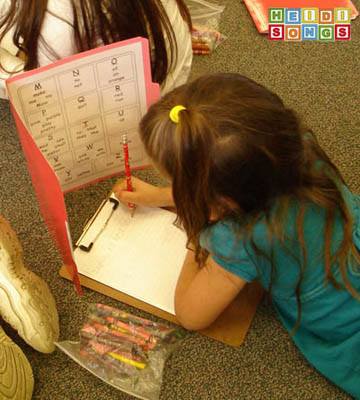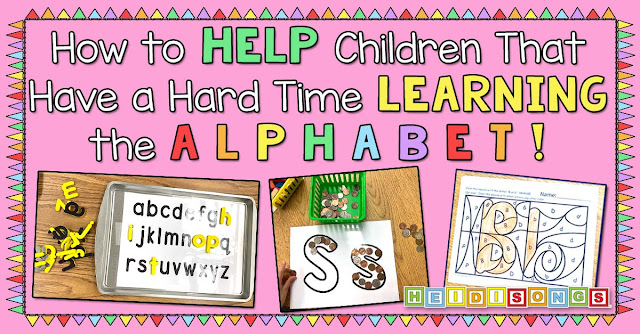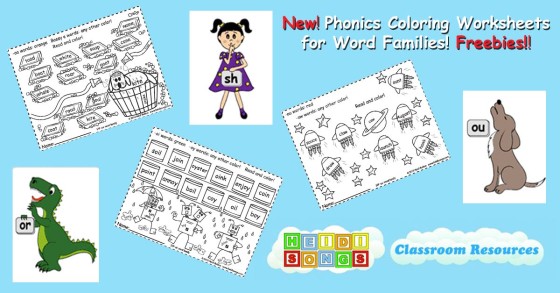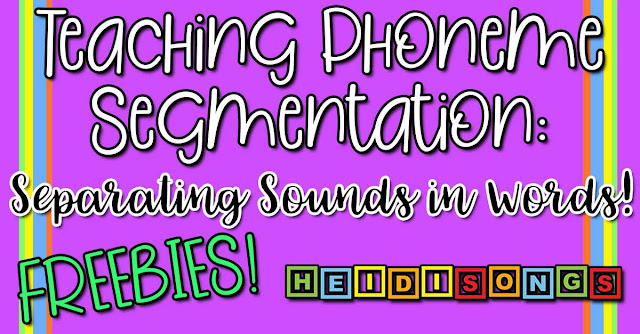Managing Journal Writing Time in Kindergarten
Journal writing with kindergartners does not have to be stressful! If you manage it the right way, you can teach the children to work independently during this time and confer with each of them on their writing later! Our quiet after lunch journal writing time was one of my favorite times of day when I taught full day Kindergarten! I had it set up so that it ran smoothly and the children worked independently. It was a very fun and relaxing time of day for all of us, I think! Read on to find out how I did it.
This is how I managed my journaling time in Kindergarten.
Note that the "set up" was particularly important! Our play time always FOLLOWED their writing time, and that helped motivated them to follow the rules and get their writing done. We did not start independent journal writing until the THIRD trimester of Kindergarten. See point six below for more on why.
1. My rule was that everyone HAD to at least try to use the restroom before we began, because I would not let anyone stop in the middle of journaling to go unless it was an emergency.
Anyone who left their journal to use the bathroom would have to give up the first five minutes of their playtime, which came right after journal time. (This meant choosing their play activity last, which they hated!)
2. Everyone needed to get a drink before beginning their journals, because nobody could get up to get one while writing either!
3. I let the children lay down on the floor to write with clipboards, and everyone had an assigned spot on the carpet to separate those that tended to chat. The kids spread out all over the room, some were even under tables, in the loft, and cozied up next to book shelves!
If you would like a copy of the "Wandering Word Wall" pictured above, click on this link! (It's free!) :)
4. Everyone was to bring a set of supplies with them to their spot: a baggie of crayons from our class set, a pencil, an eraser, a clipboard, their journal, and a wandering word wall. (Click here to find out more and download a free copy.) I also gave them a sheet with the names of everyone in the class, and sometimes a sheet with a "seasonal words" and pictures, such as pictures of zoo animals and words, or farm animals and words, insects and words, etc.
5. My rule was that nobody could talk while journaling, nor could they ask me for help. I fibbed a little and told them that I was not allowed to spell for them after lunch or I would get in trouble (and yes, they believed me!) Basically, I wanted to get them to just write independently and fluently as much as possible, without depending on me for help. I believe that at this age at least,, the more a child stops to stress over spelling, the less fluency and creativity in their writing will result. In any case, refusing to assist in spelling helped to communicate that I wasn't emphasizing perfection, I think. We talked about their writing content later.
6. I was actually careful not to walk around and "help" or even give approving looks to children, because then they just craved it more and tried to get my attention! So I learned not to even make EYE CONTACT with them! I just wanted them to be as independent with it as possible. Please know that they got PLENTY of help and attention at other times of the day! (Note: They were able to be totally independent at this point because we didn't even start this until the third trimester, due to our district wide schedule of easing kids into full day kindergarten, which I LOVED!)
The great thing is that this freed me up to tidy up my room and put things away that needed it, etc. I was even able to pull kids for individual testing when I really had to!
7. Each day I designated a certain number of sentences (usually a minimum of two) and a picture, and suggested a topic, but they were allowed to write on any topic they wanted.
8. We started off writing for just about five or six minutes, and then stretched it to seven minutes, and then stretched it to eight minutes, etc., building our stamina as we went along. We got to the point where they could write quietly without help for about 20 minutes! This was by about April of Kindergarten, having started the year in September.
9. When they were finished, I rang a bell and had the children be responsible for putting everything back where it was supposed to go. The journals were supposed to be placed on my teacher chair and left open to the page that they were working on so that I could check them. On some days, I had the children even line up with their journals so that I could give each one a quick look, congratulate each child on their work, and then sent them off to play. I knew which children were likely to NOT finish (or perhaps not even start!), so I looked at those journals first and sent the children back to finish that needed to.
I always had a group of children that would just move over to a table and have a little "writing party" instead of choosing to play!" They would sit together and write and draw and gab- it was so cute!
For little girls especially, writing time can be a fun, social, creative experience to share with friends!
10. During their playtime, I tried to look at their journal entries more closely and confer with as many students as I possibly could about their writing. Loved that! The only thing that derailed that effort was when I needed to test kids during that playtime instead. Booooo!
11. The more I "oohed and ahhed" over their writing and shared some of the best examples later with the whole class, the more motivated they ALL were to really write LOTS! I was also careful to acknowledge PROGRESS from those who were struggling, even if they didn't write the most or the best in the class; I made a big deal of it when a child who usually only reluctantly wrote one sentence one day wrote TWO. WOWEE!!!! They loved that, and it was VERY effective!
If you are new to HeidiSongs, be sure to check out our Sing and Spell the Sight Words songs! They are GREAT for helping to produce independent writers, because once the children learn the little songs, they can usually both spell AND read the words! This makes their writing go really fast! Check out the clip below from Sing and Spell Vol. 2!
This is what it looks like in the classroom:
-Heidi
----------------------------------
Follow me! Did you enjoy this post? Do me a favor and share it with your friends! And follow this blog by signing up for my email updates here, or follow on Bloglovin', or follow me on TPT! I'm also on Pinterest, Facebook, Twitter, Instagram, Google+ and YouTube, too! Don't forget to sign up for our email newsletter for special deals and promo codes that you won't find out about anywhere else.
This is how I managed my journaling time in Kindergarten.
Note that the "set up" was particularly important! Our play time always FOLLOWED their writing time, and that helped motivated them to follow the rules and get their writing done. We did not start independent journal writing until the THIRD trimester of Kindergarten. See point six below for more on why.
1. My rule was that everyone HAD to at least try to use the restroom before we began, because I would not let anyone stop in the middle of journaling to go unless it was an emergency.
Anyone who left their journal to use the bathroom would have to give up the first five minutes of their playtime, which came right after journal time. (This meant choosing their play activity last, which they hated!)
This set is part of the Classroom Management Poster Set!
2. Everyone needed to get a drink before beginning their journals, because nobody could get up to get one while writing either!
3. I let the children lay down on the floor to write with clipboards, and everyone had an assigned spot on the carpet to separate those that tended to chat. The kids spread out all over the room, some were even under tables, in the loft, and cozied up next to book shelves!
4. Everyone was to bring a set of supplies with them to their spot: a baggie of crayons from our class set, a pencil, an eraser, a clipboard, their journal, and a wandering word wall. (Click here to find out more and download a free copy.) I also gave them a sheet with the names of everyone in the class, and sometimes a sheet with a "seasonal words" and pictures, such as pictures of zoo animals and words, or farm animals and words, insects and words, etc.
5. My rule was that nobody could talk while journaling, nor could they ask me for help. I fibbed a little and told them that I was not allowed to spell for them after lunch or I would get in trouble (and yes, they believed me!) Basically, I wanted to get them to just write independently and fluently as much as possible, without depending on me for help. I believe that at this age at least,, the more a child stops to stress over spelling, the less fluency and creativity in their writing will result. In any case, refusing to assist in spelling helped to communicate that I wasn't emphasizing perfection, I think. We talked about their writing content later.
6. I was actually careful not to walk around and "help" or even give approving looks to children, because then they just craved it more and tried to get my attention! So I learned not to even make EYE CONTACT with them! I just wanted them to be as independent with it as possible. Please know that they got PLENTY of help and attention at other times of the day! (Note: They were able to be totally independent at this point because we didn't even start this until the third trimester, due to our district wide schedule of easing kids into full day kindergarten, which I LOVED!)
The great thing is that this freed me up to tidy up my room and put things away that needed it, etc. I was even able to pull kids for individual testing when I really had to!
7. Each day I designated a certain number of sentences (usually a minimum of two) and a picture, and suggested a topic, but they were allowed to write on any topic they wanted.
8. We started off writing for just about five or six minutes, and then stretched it to seven minutes, and then stretched it to eight minutes, etc., building our stamina as we went along. We got to the point where they could write quietly without help for about 20 minutes! This was by about April of Kindergarten, having started the year in September.
9. When they were finished, I rang a bell and had the children be responsible for putting everything back where it was supposed to go. The journals were supposed to be placed on my teacher chair and left open to the page that they were working on so that I could check them. On some days, I had the children even line up with their journals so that I could give each one a quick look, congratulate each child on their work, and then sent them off to play. I knew which children were likely to NOT finish (or perhaps not even start!), so I looked at those journals first and sent the children back to finish that needed to.
I always had a group of children that would just move over to a table and have a little "writing party" instead of choosing to play!" They would sit together and write and draw and gab- it was so cute!
10. During their playtime, I tried to look at their journal entries more closely and confer with as many students as I possibly could about their writing. Loved that! The only thing that derailed that effort was when I needed to test kids during that playtime instead. Booooo!
11. The more I "oohed and ahhed" over their writing and shared some of the best examples later with the whole class, the more motivated they ALL were to really write LOTS! I was also careful to acknowledge PROGRESS from those who were struggling, even if they didn't write the most or the best in the class; I made a big deal of it when a child who usually only reluctantly wrote one sentence one day wrote TWO. WOWEE!!!! They loved that, and it was VERY effective!
If you are new to HeidiSongs, be sure to check out our Sing and Spell the Sight Words songs! They are GREAT for helping to produce independent writers, because once the children learn the little songs, they can usually both spell AND read the words! This makes their writing go really fast! Check out the clip below from Sing and Spell Vol. 2!
This is what it looks like in the classroom:
-Heidi
----------------------------------
Follow me! Did you enjoy this post? Do me a favor and share it with your friends! And follow this blog by signing up for my email updates here, or follow on Bloglovin', or follow me on TPT! I'm also on Pinterest, Facebook, Twitter, Instagram, Google+ and YouTube, too! Don't forget to sign up for our email newsletter for special deals and promo codes that you won't find out about anywhere else.




















